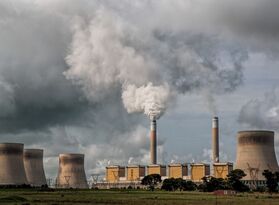Care For Air is a self-funded, independent organization committed to clean air in India.
We believe everyone should understand the immediate and long-term harm of air pollution on the human body.
We believe everyone should understand the immediate and long-term harm of air pollution on the human body.
What Should We Know About Air Pollution?
What is PM 2.5? And why do we worry about it?PM 2.5 is one of the the most dangerous pollutants — and it is invisible. From waste burning to industrial smoke, to vehicles, PM 2.5 is omnipresent in Delhi's air. Worse still, the particles are so small that they get into our lungs and blood stream causing damage across the body.
|
What are key sources of air pollution?Multiple sources emit dangerous levels of air pollution year round. These sources include vehicle exhaust, bio-mass burning, and industry emissions. Geography and weather patterns can contribute to worsening air quality.
|
What are the health
|
Air pollution comes from multiple sources and and once we understand what those sources are, so will come the solutions.
According to a 2014 World Health Organization study of 1,600 cities in 91 countries, New Delhi ranked as the most polluted city in the world. In fact, 13 of the most polluted 20 cities were in India. This data has since been updated by the W.H.O and New Delhi got displaced from the top of the list—unfortunately, not because it cleaned up its air, but because W.H.O. started tracking other more polluted cities in the world.
A new W.H.O air quality model confirmed in Sep 2016 that 92% of the world's population lives in places where air quality levels exceed W.H.O limits. Nearly 90% of air-pollution-related deaths occur in low and middle-income countries, and in 2012, an estimated 6.5 million deaths (11.6% of all global deaths) were associated with indoor and outdoor air pollution together.
A new W.H.O air quality model confirmed in Sep 2016 that 92% of the world's population lives in places where air quality levels exceed W.H.O limits. Nearly 90% of air-pollution-related deaths occur in low and middle-income countries, and in 2012, an estimated 6.5 million deaths (11.6% of all global deaths) were associated with indoor and outdoor air pollution together.






